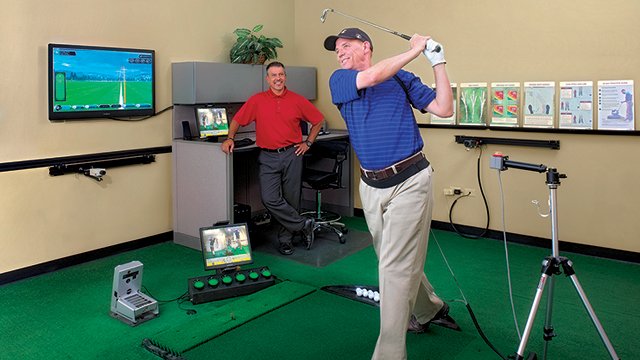NEWS
GolfTEC's SwingTRU Motion Study illustrates big swing differences between low, high handicap players

Utilizing a nationwide database of approximately 30,000 golfers, GolfTEC analyzed 48 different body positions within a player’s swing that correlates to their handicap, to determine the most efficient methods to improve their game.
Presenting at the 15th PGA Teaching & Coaching Summit at the Orange County Convention Center’s Chapin Theatre, the research was led by GolfTEC PGA Members Nick Clearwater, Brad Skupaka and Patrick Nuber and the University of Denver School of Engineering and Computer Science.
In what they believe is the largest study of its kind, GolfTEC’s “SwingTRU Motion Study” highlighted six key body positions that correlated to skill level and handicap for everyone from Tour players to 30 handicaps: Hip Sway, Shoulder Tilt Top, Hip Sway Impact, Hip Turn Impact, Shoulder Tilt Impact and Shoulder Bend Finish.
RELATED: What I learned through the SwingTRU Motion Study
The idea was to identify the best way to hit the ball the straightest and farthest. The results show there is a big difference in the approach to the swing by the top players in the world versus high handicap players. The study was designed to identify a starting point to work with a golfer on their swing.
“There was a very specific pattern that the best players are doing with their body,” said Skupaka, a PGA Certified Professional and GolfTEC Director of Teaching Quality. “The best players are more alike than different.”
The study placed sensors in the same location on each participant at the top of the spine and lower back to analyze the placement of the hips and shoulders at each point of the swing and obtain consistent data.
They found the following: Golfers that turn more at the top of the swing turn more throughout the entire backswing. In addition, there is a correlation to success between tilting left and right throughout the swing, as the best golfers tilt most leftward and rightward.
“On average, better golfers turn, tilt and bend more during backswing, and the back during the follow through,” said Patrick Nuber, who is also both a PGA Certified Professional and GolfTEC Director of Teaching Quality.
Analyzing swings using heat maps and 3D graphic displays shows a large discrepancy in the swings and motions of the typical golfer.
“Better golfers had hip sway closer to the target than worse golfers,” added Nuber.
The average Tour player turns their shoulders 90 degrees.
Meanwhile, high handicappers typically take much shorter swings and do not bend their backs anywhere close to the amount Tour players do during their swing.
Still, not every swing is the same. Physical makeup and personal preference come into play.
“Every golfer’s spine changes,” said Clearwater, GolfTEC’s Vice President of Teaching Quality. “The best players never keep their spines the same. The best players change their spine a lot.”
The research concludes that as a golfer’s body position improves closer to the average measurement of professional golfers, there is a similar improvement in handicap. Researchers also believe that every day golfers can develop “motor control,” especially through golf lessons.
“You can do a lot with all of this data,” said Clearwater. “This provides a starting point to play the game with actual data. You will want to get your swing measured related to these variables.”
For more information on the GolfTEC Tru Motion Study, visit golftec.com/swingtru. To find a PGA Professional for lessons near you, click here.